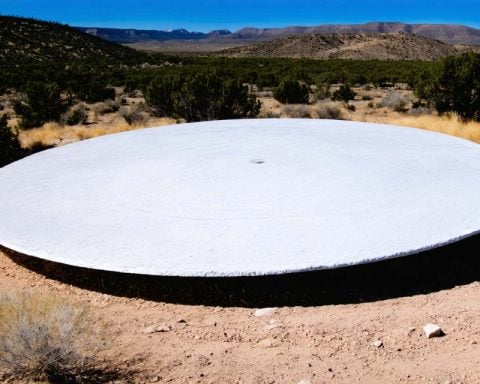Urgent Warning from ULA’s CEO
The leader of a prominent rocket launch firm is sounding the alarm over a looming threat from space. Tony Bruno, head of United Launch Alliance (ULA), recently detailed serious concerns regarding China’s advancements in space weaponry. In a blog post, he highlighted the risk posed by China’s “satellite killers” positioned in orbit, which could potentially incapacitate U.S. communication systems in conflict scenarios.
Bruno is particularly anxious about existing vulnerabilities in low-Earth orbit satellites, like those belonging to SpaceX’s Starlink network. These satellites are highly exposed, making them prime targets for a swift missile strike that could happen within minutes. Recognizing the precarious nature of these orbits, he posits that an assault could create a dangerous cascade of orbital debris, effectively disabling a significant portion of the Starlink system.
To mitigate this threat, Bruno advocates for the creation of a fleet of fast, long-range interceptors—akin to naval destroyers but designed for space. He envisions a robust “squadron” capable of defending against such aerial assaults. He underscores that delaying action could lead to dire consequences, especially amidst rising tensions over potential conflict concerning Taiwan.
Preparing for the Unthinkable
Bruno’s warnings come as military experts have indicated that China and Russia may be developing advanced technologies capable of targeting American satellites. Amid this escalating arms race, the need for a strategic defense initiative has never been more pressing.
Urgent Warning from ULA’s CEO: The Growing Threat of Space Warfare
The Landscape of Space Defense
United Launch Alliance (ULA) CEO Tony Bruno is raising alarms regarding the increasing threat of space-based weaponry, particularly from nations such as China. Highlighting the emergence of “satellite killers,” Bruno expresses concerns over the vulnerability of U.S. communication systems, especially the Starlink satellites operated by SpaceX.
The Vulnerability of Low-Earth Orbit Satellites
Low-Earth orbit (LEO) has become a high-stakes arena in the new space race. Satellites in this proximity are susceptible to fast missile strikes, potentially leaving them defenseless. Bruno emphasizes that a single successful attack could generate a catastrophic cascade of orbital debris, which could severely disrupt satellite operations globally, threatening critical communications and navigation functions.
The Call for Action: A New Space Defense Initiative
To counter these risks, Bruno advocates for the establishment of advanced defense systems, particularly a fleet of fast, long-range interceptors that could monitor and protect U.S. assets in space. He likens this to the naval destroyers used to defend against aerial threats across oceans, but specifically adapted for an orbital environment. Such measures are crucial as military experts warn of an escalating arms race, fueled by countries like China and Russia developing capabilities to target adversarial satellites.
Pros and Cons of Current Satellite Defense Strategies
Pros:
– Increased awareness of vulnerabilities in space security.
– Potential development of new defense technology and strategies.
– Enhanced collaboration between military and commercial sectors for shared assets.
Cons:
– High costs associated with developing and deploying interceptors.
– Potential for an arms race in space, increasing tensions among global powers.
– Legal and ethical considerations regarding space weaponization.
Future Predictions for Space Security
As tensions rise, particularly concerning strategic regions like Taiwan, experts predict that countries will increasingly prioritize the development of space defense systems. The National Defense Authorization Act is expected to include measures focused on space security, highlighting the urgent need for congressional support in funding these initiatives.
Innovations in Satellite Defense Technology
Current trends show a push towards autonomous satellite defense systems capable of real-time threat assessment and response. This technology would enable satellites to maneuver autonomously to evade attacks and minimize damage from debris.
Market Analysis of Space Defense Solutions
The burgeoning space defense market is projected to grow significantly over the next decade. As nations realize the importance of safeguarding their satellite constellations, investment in space-related defense systems is expected to accelerate. Companies like ULA and SpaceX are at the forefront of this movement, pushing for contracts and collaborations with both military and commercial entities.
Conclusion
The warnings from ULA’s CEO signify an urgent transition in how nations perceive the threat landscape concerning space. With advanced technologies being developed to target satellites, it’s imperative for the U.S. to enhance its defensive capabilities. Addressing these vulnerabilities swiftly could be pivotal in maintaining operational continuity for crucial satellite-based services worldwide.
For more insights on the future of space and its defense strategies, visit ULA.



















